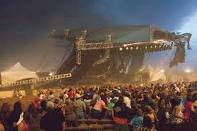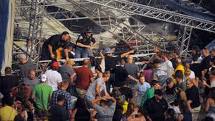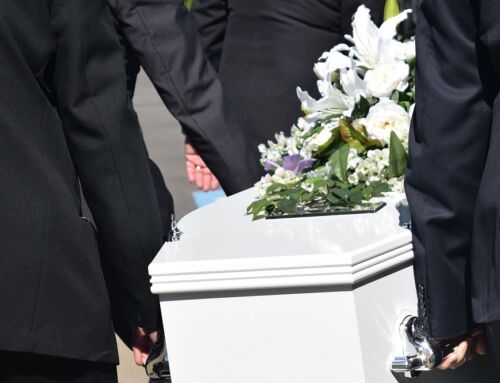On Saturday, August 13, 2011, a strong wind toppled the a massive rigging and 
The Fair was cancelled Sunday as officials begin the process of determining what happened and respond to questions raised about whether the tragedy could have been prevented. While Governor Mitch Daniels was “defensive” in his statement that he believed that this was a random act of Mother Nature, a sudden powerful wind gust, that he does not see how anyone could have foreseen. Others question whether State Fair officials and State Police didn’t take this weather warning more seriously and specifically order an evacuation. Concert-goers and other witnesses said an announcer at the concert did warn them of impending bad weather, but gave attendants conflicting accounts of whether there were emergency sirens — or a clear warning before the tragedy. Indeed some fair workers said they never heard any warnings. Groundskeeper Roger Smith stated that “It’s pathetic, it makes me mad. Those lives could have been saved yesterday.”
The stage toppled at 8:49 p.m. A timeline released by the Indiana State Police showed that the National Weather Service indicated as early as 8:00 that a storm with hail and 40 mph winds was expected to hit the fair grounds at 9:15. Meteorologists indicate that it’s not unusual for strong winds to precede a thunderstorm like the one that was proceeding towards Indianapolis and the fairgrounds on Saturday evening. As early as 7:00 p.m. the National Weather Service advised that a thunderstorm would be at the fairgrounds between 9:00 and 9:30 p.m. The Weather Service advised that the storm would contain heavy rain, lightning, strong winds and 1” to 2” hail. In areas around the fair grounds proceeding the approaching storm, the Weather Service had been predicting high winds for several hours prior to the collapse.

Had State Fair officials and Security immediately taken the approach that was taken at Conner Prairie based on these same weather alerts, this tragedy may never had occurred. The same warnings from the National Weather Service caused a different reaction at Conner Prairie, which is about 15 miles north of the State Fair grounds. On Saturday about 7,000 fans gathered for the Indianapolis Symphony Orchestra at Conner Prairie. An MC from a local radio station came out and addressed the crowd, indicating that severe storms were approaching and fans were told they should immediately head back to their vehicles. This warning came at about 8:15 p.m. The announcer indicated that Conner Prairie officials felt that they did not think it was safe for the crowd to remain. He announced repeatedly that “You should return to your cars now”and the crowd dispursed.


If you or a loved one was involved in this trudge and you would like to speak with an experienced attorney contact Indianapolis Personal Injury Lawyer, William W. Hurst for a free consultation.




